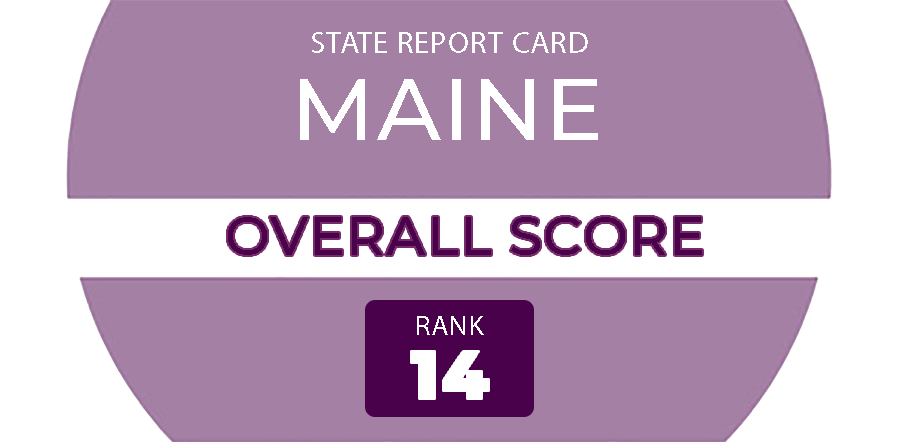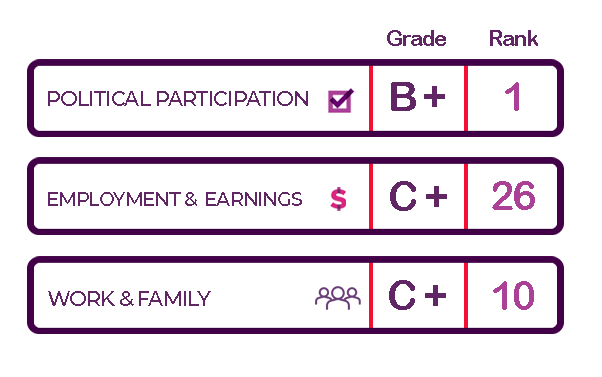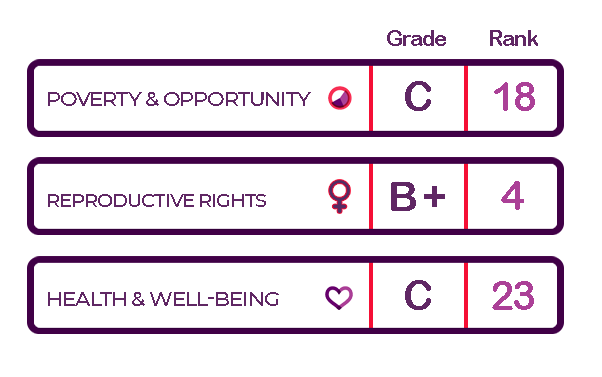
The Status of Women in the States project ranks and grades Maine across several areas of women’s lives. While Maine performs better in some areas, no matter the rank, there are still barriers and inequities that prevent women from succeeding and thriving. Across all indices, Maine ranks toward the top of states in the country. Maines’s performance is the strongest on the Political Participation and Reproductive Rights indices. Maines’s performance is weakest on the Employment and Earnings and the Health and Well-Being indices.


Explore the Data
As state policies and programs have changed over the years, so has the status of women in Maine. Since 1996, Maine has made progress in some areas, while lagging in others.
Articles and Publications
Work Supports for Adult Health: The Role of Paid Family and Medical Leave
Many Americans struggle to balance work and caregiving responsibilities. As the United States population ages — with the U.S. Census Bureau projecting that by 2035 those 65 and older will outnumber the youth for the first time in history – the number of men and women who are providing care for someone age 65 and older will continue to increase. In addition, one in seven people live with an adult with a disability.
Dreams Deferred: A Survey on the Impact of Intimate Partner Violence on Survivors’ Education, Careers, and Economic Security
This report examines the educational, career, and economic effects of intimate partner violence by presenting findings from a survey of 164 survivors developed by the Institute for Women’s Policy Research (IWPR) and administered at transitional housing programs, shelters, and other domestic violence programs in 11 states and the District of Columbia.
Sexual Harassment and Assault at Work: Understanding the Costs
Through a review of the current literature on sexual harassment and assault, this briefing paper highlights how workplace sexual harassment and assault affect women’s economic advancement and security, and the costs of these harms to employers (including estimates of financial losses where available). It also provides recommendations for preventing sexual harassment and reducing the negative effects of harassment for individuals and workplaces.




